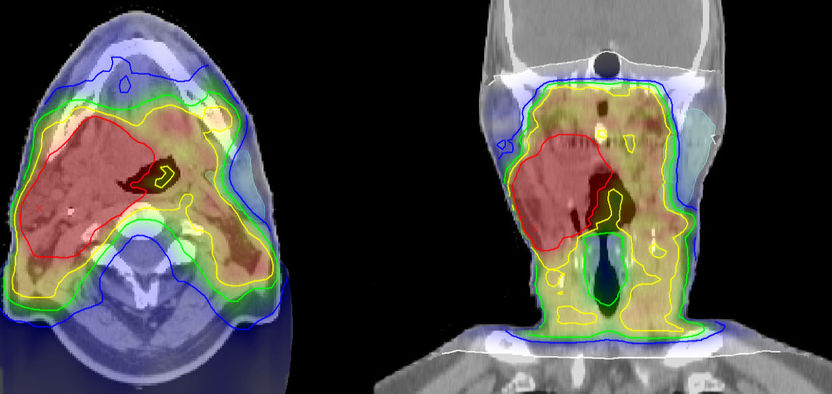Gene activity of bacteria under red light
Results open up exciting possibilities in the biotechnological application of bacteria
Researchers at the University of Bayreuth have changed the sensitivity of bacterial systems for controlling gene activity to red light and reprogrammed their molecular response to the light stimulus. The results open up exciting possibilities in the biotechnological application of bacteria.
Bacteria must constantly adapt to changing external signals such as temperature, pH value or light. At the molecular level, these adaptations are often made by adding or splitting off phosphate groups. In many bacteria, a two-component system consisting of a light-sensitive enzyme and a regulator is often responsible for these processes. In some systems, the enzyme cleaves phosphate groups from the regulator under red light; in the dark, the enzyme adds phosphate groups to the regulator. The regulator then triggers further molecular processes in the bacteria, such as a change in gene activity, which can be used to produce almost any protein. Researchers at the University of Bayreuth have modified a bacterial two-component system and thus shown that bacterial systems can be specifically reprogrammed in their physiological response to external stimuli. The publication was recently published in Nature Communications.
For their model system, Stefanie Meier, a doctoral student in the Photobiochemistry working group, and Prof. Dr. Andreas Möglich, head of the working group, replaced the light-sensitive unit of the two-component system with another one. This made the two-component system ten times more sensitive to red light than the original variant.
The researchers found the reason for the higher sensitivity to light in the altered activity of the phosphate groups: In the modified two-component system, the phosphate groups were split off more quickly under red light compared to the original system. This means that the system is inactivated even at low red light intensities.
The researchers also changed the length of the connection (the “linker”) between the light-sensitive unit and the rest of the enzyme. They found that the systems with modified linkers exhibited contrasting properties in light regulation and signal response at the genetic level to the original systems.
In the eyes of the researchers, the resulting variants with increased sensitivity and reprogrammed activity serve as novel tools for applications in synthetic biology and biotechnology. "The results obtained from this model system have general relevance for countless systems of this type, which regulate important bacterial responses such as development, movement and infectivity. In addition, we are creating systems that can be used directly in biotechnology, which allow the production of any proteins to be activated by red light,” says Möglich.
Original publication
Other news from the department science

Get the life science industry in your inbox
By submitting this form you agree that LUMITOS AG will send you the newsletter(s) selected above by email. Your data will not be passed on to third parties. Your data will be stored and processed in accordance with our data protection regulations. LUMITOS may contact you by email for the purpose of advertising or market and opinion surveys. You can revoke your consent at any time without giving reasons to LUMITOS AG, Ernst-Augustin-Str. 2, 12489 Berlin, Germany or by e-mail at revoke@lumitos.com with effect for the future. In addition, each email contains a link to unsubscribe from the corresponding newsletter.
Most read news
More news from our other portals
Last viewed contents

Century-old drug a potential new approach to autism

Innovative approach to treat autism spectrum disorders - University of Basel spin-off Translation-X receives Venture Kick funding
Physicists demonstrate method to study atoms critical to medicine
Creabilis Therapeutics Appoints Anthony Wilson as its New Chief Executive Officer
Max-Planck-Institut für Dynamik und Selbstorganisation - Göttingen, Germany

Nerve Stimulation with the Help of Implantable Mini Solar Cells - The technology enables completely new types of implants























































